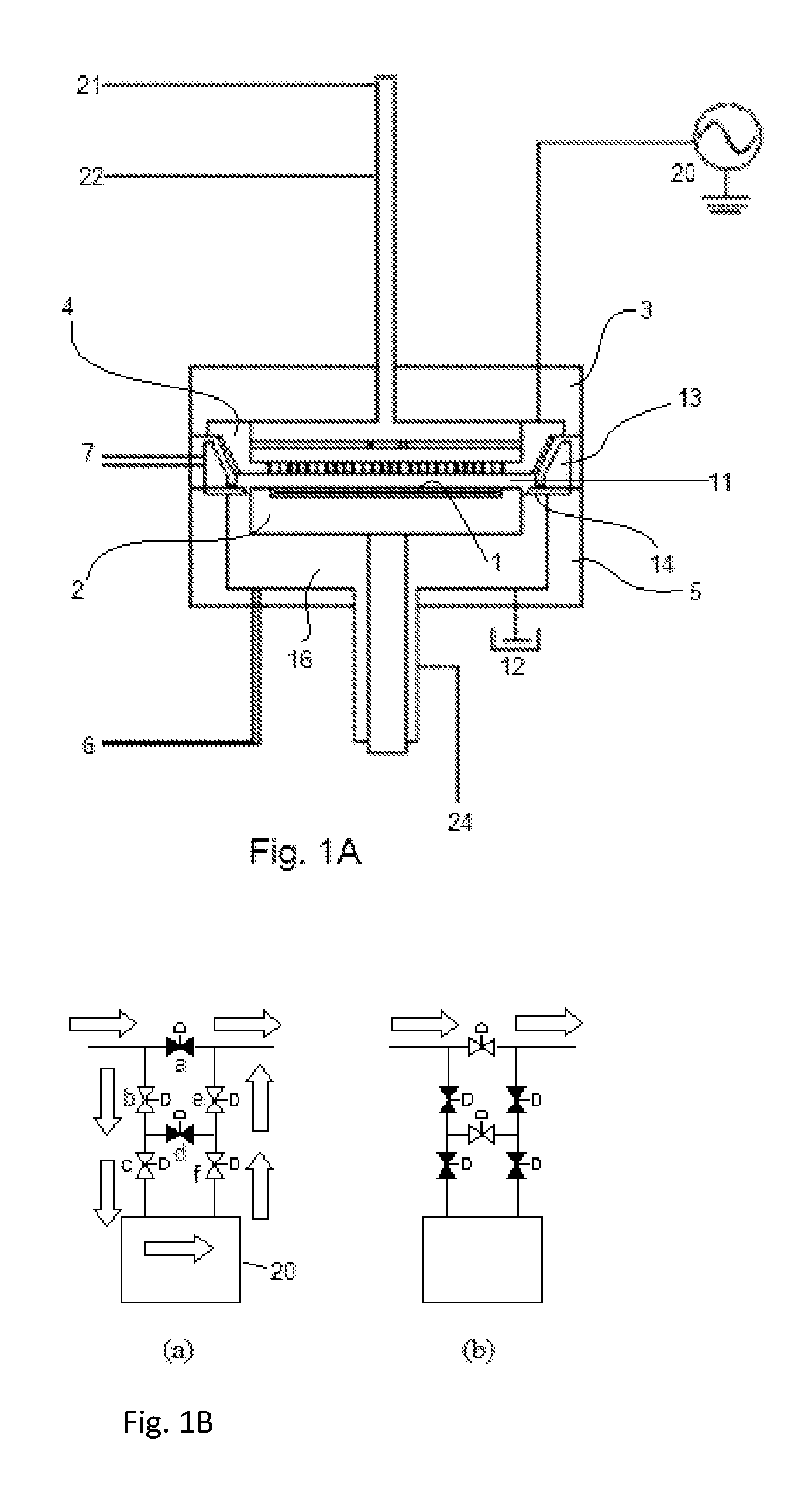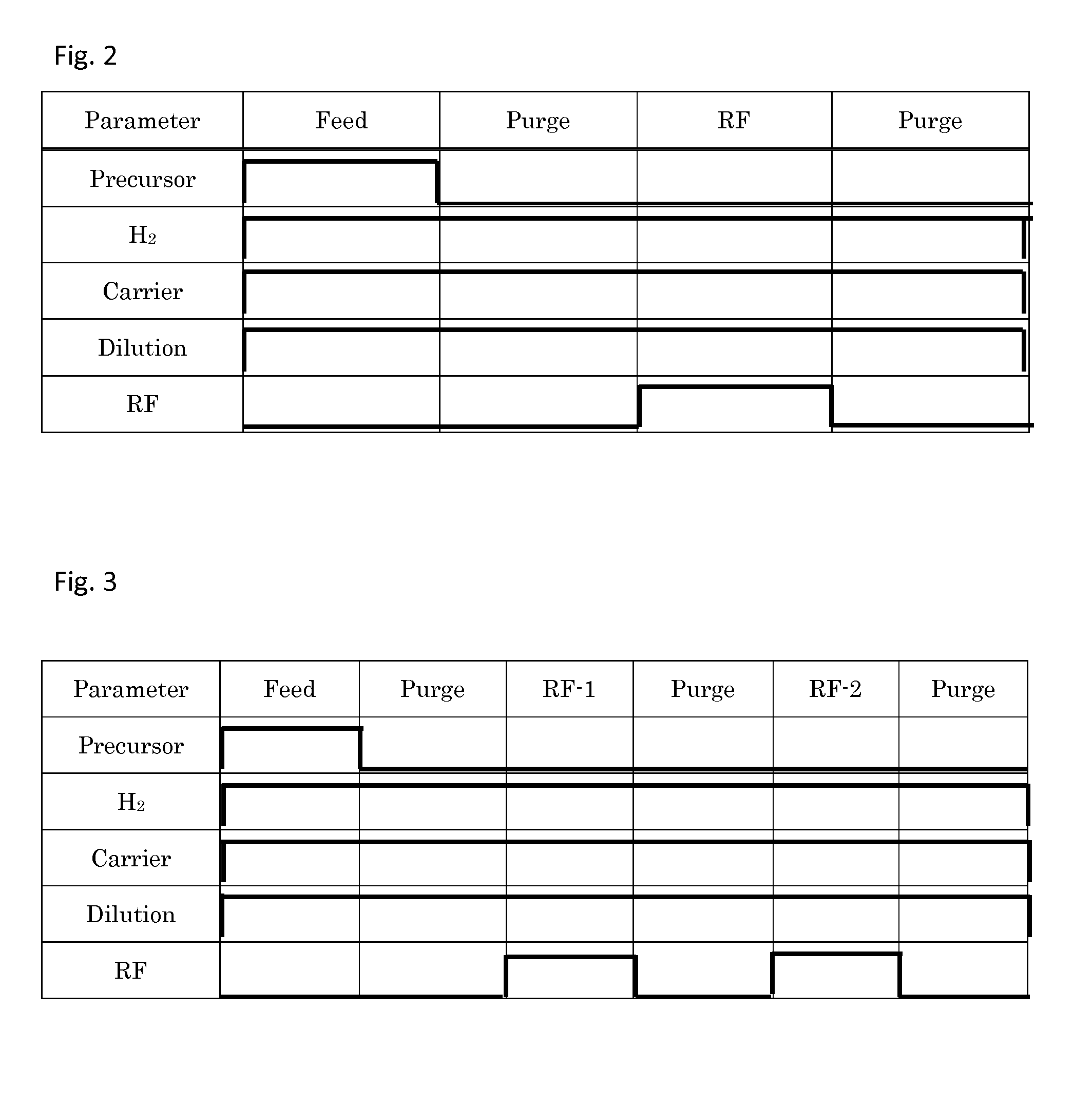Method for forming dielectric film in trenches by PEALD using H-containing gas
a dielectric film and trench technology, applied in the direction of basic electric elements, semiconductor/solid-state device manufacturing, electric apparatus, etc., can solve the problems of insufficient resolution of the different etch rate between the sidewall and the top surface, and the thickness of the film deposited on the sidewall of the trench is relatively high, so as to increase the deposition rate of film. , the effect of increasing the thickness of the film
- Summary
- Abstract
- Description
- Claims
- Application Information
AI Technical Summary
Benefits of technology
Problems solved by technology
Method used
Image
Examples
examples
[0051]A silicon carbide film was formed on a Si substrate (0300 mm) having trenches with an aspect ratio of 3.5 (a width of 30 nm, and a depth of 110 nm) by PEALD using a sequence illustrated in FIG. 2 or 3, one cycle of which was conducted under the common conditions shown in Table 2 (process cycle) below using the PEALD apparatus illustrated in FIG. 1A and a gas supply system (FPS) illustrated in FIG. 2 with the specific conditions and sequence indicated in Table 3.
[0052]
TABLE 2(the numbers are approximate)Common Conditions for Process CycleSubstrate temperature300.° C.Pressure300 PaCarrier gas and dilution gasArReactant gasH2Flow rate of carrier / dilution gas 2000 sccm / 1000 sccm (continuous)(3000 sccm total)Purge after precursor feed pulse1 secPurge after RF power pulse1 secRF power100 WTarget Thickness (nm)10.
[0053]
TABLE 3(the numbers are approximate)Feed RF H2 FeedamountpulseflowSequence(seconds)(g / cycle)(seconds)Precursor(sccm)*1FIG. 210.041DVDMS0*2FIG. 20.10.0041DVDMS800*3FIG....
PUM
 Login to View More
Login to View More Abstract
Description
Claims
Application Information
 Login to View More
Login to View More - R&D
- Intellectual Property
- Life Sciences
- Materials
- Tech Scout
- Unparalleled Data Quality
- Higher Quality Content
- 60% Fewer Hallucinations
Browse by: Latest US Patents, China's latest patents, Technical Efficacy Thesaurus, Application Domain, Technology Topic, Popular Technical Reports.
© 2025 PatSnap. All rights reserved.Legal|Privacy policy|Modern Slavery Act Transparency Statement|Sitemap|About US| Contact US: help@patsnap.com



